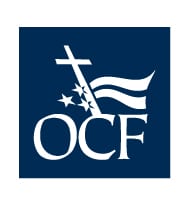There is a sea creature in the Gulf of Aqaba (at the southern tip of Israel) that has recently displayed an amazing ability. The animal is a species of Ascidiacea (commonly known as ascidians, tunicates, and sea squirts) which absorbs nutrients by filtering sea water. But that’s not the amazing part.
A team of scientists working out of the University of Tel Aviv, discovered that the species Polycarpa mytiligera can be cut into three separate pieces and survive. Surviving such trauma is all the more astounding considering that it can lose vital organs (e.g. heart, nerve center, stomach) in the process. Yet each piece will regenerate all those vital organs that were lost or damaged. Consequently, the three pieces will become three fully developed ascidians.
Now ascidians are known for their regenerative powers. In fact, for those species which are asexual, replication by division is typical. But P. mytiligera reproduces sexually – by the fertilization of its eggs. Therefore, its ability to both survive such trauma and multiply by it, makes it one of a kind. Presently, scientists know of no other sexually reproducing chordate which has this ability. Since human beings are among the sexually reproducing chordates, the research team hopes to apply P. mytiligera’s genetic information to the human genome. The intent is to see if this ability for “organ regeneration” might be transferable to people.
But, in a way, human beings already have such powers for survival and replication through trauma. But it’s not so apparent.
Moms and dads know what I’m talking about. Parenting can be a very rewarding experience. But bringing other human beings into the world and raising them to adulthood takes a huge chunk out of a parent’s heart and soul. As they share their children’s heartbreak and disappointments – as well as carry their own – parents sometimes feel like they’ve been torn asunder. Throw illness, tragedy, and other assorted trauma into the picture and the poor parent may feel like they’ve been broken to pieces. Yet God brings healing to whatever is broken. And through the ordeal, parents know that there will be other human beings who owe their very existence to their sacrifices.
In many other ways God uses painful trauma to bring about growth in our spirit and faith. But He also uses it to bring about multiplication in our lives.
The Bible gives us an analogy of this process. Think about Jesus’ multiplication of the loaves and fishes to feed a crowd of 5,000 in Mark 6:31-44. Before this hungry mob Jesus held up five small loves and two dried fish. Surely, in the face of such hunger this lad’s lunch didn’t stand a chance of survival. Yet, in the hands of Jesus it stuffed the stomachs of every hungry man. And, in the end, the loaves and fishes came out of the ordeal immensely greater than before. After doing their work, those five loaves and two fish were enough to fill twelve baskets.
Of course, in the process of feeding so many and multiplying so extensively, the loaves and fishes suffered some serious fragmentation. They were left in pieces. Though it was an amazing miracle that sustained the lives of thousands, it was a traumatic experience for the little loaves and fishes.
Fortunately, when God calls His children to do what those loaves and fishes accomplished, He brings healing and growth to our fragmented hearts. As God enables the poor Polycarpa mytiligera to arise from a painful severing and regrow all that was lost, God will do the same for us. And through our ordeal of pain and progress, He’ll bring many others into His eternal kingdom.
PRAYER: Dear Lord Jesus, I thank You that in all my affliction, You are also afflicted. I am never alone in my suffering. For You know, by personal experience, all the pain and sacrifice I endure to bring both children into this world and other souls into Your kingdom. Please, dear Lord, do whatever it takes to accomplish Your purpose through me. Though it brings pain and sorrow, I trust You to restore all that is lost and to heal all that is broken. Amen.
(Information from: https://www.sciencedaily.com/releases/2021/05/210503104813.htm)






